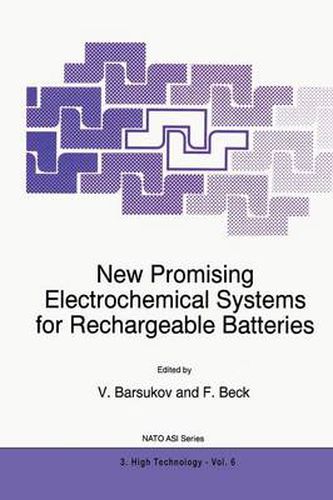Readings Newsletter
Become a Readings Member to make your shopping experience even easier.
Sign in or sign up for free!
You’re not far away from qualifying for FREE standard shipping within Australia
You’ve qualified for FREE standard shipping within Australia
The cart is loading…






This title is printed to order. This book may have been self-published. If so, we cannot guarantee the quality of the content. In the main most books will have gone through the editing process however some may not. We therefore suggest that you be aware of this before ordering this book. If in doubt check either the author or publisher’s details as we are unable to accept any returns unless they are faulty. Please contact us if you have any questions.
The storage of electroenergy is an essential feature of modem energy technologies. Unfortunately, no economical and technically feasible method for the solution of this severe problem is presently available. But electrochemistry is a favourite candidate from an engineering point of view. It promises the highest energy densities of all possible alternatives. If this is true, there will be a proportionality between the amount of electricity to be stored and the possible voltage, together with the mass of materials which make this storage possible. Insofar it is a matter of material science to develop adequate systems. Electricity is by far the most important secondary energy source. The present production rate, mainly in the thermal electric power stations, is in the order of 1.3 TW. Rechargeable batteries (RB) are of widespread use in practice for electroenergy storage and supply. The total capacity of primary and rechargeable batteries being exploited is the same as that of the world electric power stations. However, the important goal in the light of modem energy technology, namely the economical storage of large amounts of electricity for electric vehicles, electric route transport, load levelling, solar energy utilization, civil video & audio devices, earth and spatial communications, etc. will not be met by the presently available systems. Unless some of the new emerging electrochemical systems are established up to date, RB’s based on aqueous acidic or alkali accumulators are mainly produced today.
$9.00 standard shipping within Australia
FREE standard shipping within Australia for orders over $100.00
Express & International shipping calculated at checkout
This title is printed to order. This book may have been self-published. If so, we cannot guarantee the quality of the content. In the main most books will have gone through the editing process however some may not. We therefore suggest that you be aware of this before ordering this book. If in doubt check either the author or publisher’s details as we are unable to accept any returns unless they are faulty. Please contact us if you have any questions.
The storage of electroenergy is an essential feature of modem energy technologies. Unfortunately, no economical and technically feasible method for the solution of this severe problem is presently available. But electrochemistry is a favourite candidate from an engineering point of view. It promises the highest energy densities of all possible alternatives. If this is true, there will be a proportionality between the amount of electricity to be stored and the possible voltage, together with the mass of materials which make this storage possible. Insofar it is a matter of material science to develop adequate systems. Electricity is by far the most important secondary energy source. The present production rate, mainly in the thermal electric power stations, is in the order of 1.3 TW. Rechargeable batteries (RB) are of widespread use in practice for electroenergy storage and supply. The total capacity of primary and rechargeable batteries being exploited is the same as that of the world electric power stations. However, the important goal in the light of modem energy technology, namely the economical storage of large amounts of electricity for electric vehicles, electric route transport, load levelling, solar energy utilization, civil video & audio devices, earth and spatial communications, etc. will not be met by the presently available systems. Unless some of the new emerging electrochemical systems are established up to date, RB’s based on aqueous acidic or alkali accumulators are mainly produced today.